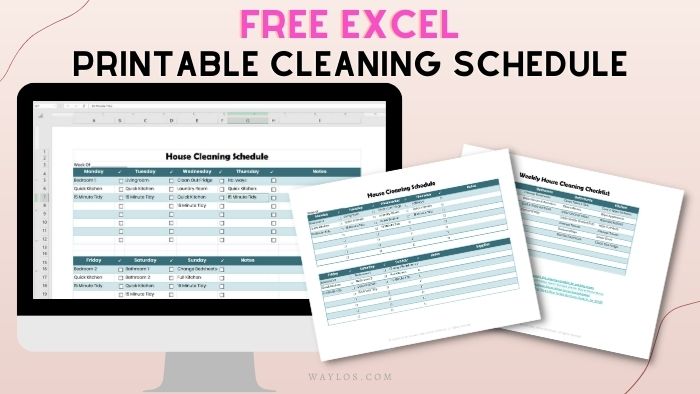The Ultimate Guide to Set Amazing Personal Financial Goals

[et_pb_section fb_built=”1″ _builder_version=”4.16″ global_colors_info=”{}”][et_pb_row _builder_version=”4.16″ global_colors_info=”{}”][et_pb_column type=”4_4″ _builder_version=”4.16″ global_colors_info=”{}”][et_pb_text _builder_version=”4.16″ text_font=”Georgia||||||||” text_text_color=”#000000″ text_font_size=”19px” ul_font_size=”20px” ul_line_height=”1.7em” ol_font_size=”20px” ol_line_height=”1.7em” header_font=”Georgia||||||||” header_2_font=”Georgia|700|||||||” header_2_text_color=”#cc1c9a” header_2_font_size=”30px” header_2_line_height=”1.7em” header_3_font=”Georgia||||||||” global_colors_info=”{}”]
Setting the right financial goals can be hard!
There are plenty of posts and books out there with tons of lists of “responsible” financial goals. But the truth is, when we are working toward someone else’s idea of a good financial goal, we will lose interest fast.
And in the financial world, time really is money. For every day we put off saving or debt payoff, we are costing our family interest. I mean that literally. Literally losing out on investment interest, or racking up fees for some giant bank who does not care about us, for the “privilege” of borrowing money from them.
That’s why I’m asking you to jump on the I’m-Starting-Today train with me, and let’s get to setting our financial goals!
[/et_pb_text][/et_pb_column][/et_pb_row][et_pb_row column_structure=”1_4,1_2,1_4″ _builder_version=”4.16″ global_colors_info=”{}”][et_pb_column type=”1_4″ _builder_version=”4.16″ global_colors_info=”{}”][/et_pb_column][et_pb_column type=”1_2″ _builder_version=”4.16″ global_colors_info=”{}”][et_pb_image src=”https://livinglifeasmoms.com/wp-content/uploads/2020/03/how-to-set-financial-goals-min.jpg” _builder_version=”4.16″ global_colors_info=”{}”][/et_pb_image][/et_pb_column][et_pb_column type=”1_4″ _builder_version=”4.16″ global_colors_info=”{}”][/et_pb_column][/et_pb_row][et_pb_row _builder_version=”4.16″ global_colors_info=”{}”][et_pb_column type=”4_4″ _builder_version=”4.16″ global_colors_info=”{}”][et_pb_text _builder_version=”4.16″ text_font=”Georgia||||||||” text_text_color=”#000000″ text_font_size=”19px” ul_font_size=”20px” ul_line_height=”1.7em” ol_font_size=”20px” ol_line_height=”1.7em” header_font=”Georgia||||||||” header_2_font=”Georgia|700|||||||” header_2_text_color=”#cc1c9a” header_2_font_size=”30px” header_2_line_height=”1.7em” header_3_font=”Georgia||||||||” global_colors_info=”{}”]
This is a doozy of a post, extremely informative, with step-by-step instructions to help you set your financial goals.
Not just any goals. The goals YOU need, to reach the life YOU want.
The best part is, if you have a family, you can all take these steps together! When everyone is on board with the house’s financial plan, it’s MUCH easier to make day-to-day decisions as a family, without any fighting or headaches.
Strap in!!
[/et_pb_text][/et_pb_column][/et_pb_row][et_pb_row _builder_version=”4.16″ global_colors_info=”{}”][et_pb_column type=”4_4″ _builder_version=”4.16″ global_colors_info=”{}”][et_pb_text _builder_version=”4.16″ text_font=”Georgia||||||||” text_text_color=”#000000″ text_font_size=”19px” ul_font_size=”19px” ul_line_height=”1.7em” ol_font_size=”20px” ol_line_height=”1.7em” header_font=”Georgia||||||||” header_2_font=”Georgia|700|||||||” header_2_text_color=”#cc1c9a” header_2_font_size=”30px” header_2_line_height=”1.7em” header_3_font=”Georgia||||||||” global_colors_info=”{}”]
What Are Financial Goals
Financial goals make up all of the ideal ways you want to spend, and save, money in your lifetime. If the definition of a “Goal” is a desired result, then a “Financial Goal” is the desired result of your spending and saving habits. For example, a common financial goal is to have a million dollars for retirement.
There are several big-ticket financial goals we should all be reaching for in our lifetime, which can more or less be separated into three categories:
- Short term goals (reachable in one year or less),
- Intermediate goals (reachable sooner than later, but not an emergency), and
- Long term goals (goals set ten years or longer into the future).
Let’s go through why financial goals are so important, and what makes for a good financial goal. Then, we’ll talk about which goals to set, and why. Lastly, I’ll give you an amazing list of goals you should be adding to your Budget Binder.
[/et_pb_text][/et_pb_column][/et_pb_row][et_pb_row _builder_version=”4.16″ global_colors_info=”{}”][et_pb_column type=”4_4″ _builder_version=”4.16″ global_colors_info=”{}”][et_pb_text _builder_version=”4.16″ text_font=”Georgia||||||||” text_text_color=”#000000″ text_font_size=”19px” ul_font_size=”20px” ul_line_height=”1.7em” ol_font_size=”20px” ol_line_height=”1.7em” header_font=”Georgia||||||||” header_2_font=”Georgia|700|||||||” header_2_text_color=”#cc1c9a” header_2_font_size=”30px” header_2_line_height=”1.7em” header_3_font=”Georgia||||||||” global_colors_info=”{}”]
**If you are loving this method, download my Financial Goals worksheet by signing up to my email list!
[/et_pb_text][et_pb_image src=”https://livinglifeasmoms.com/wp-content/uploads/2020/03/Get-Yours-Here-min.jpg” _builder_version=”4.16″ global_colors_info=”{}”][/et_pb_image][et_pb_code _builder_version=”4.16″ global_colors_info=”{}”]
[/et_pb_code][/et_pb_column][/et_pb_row][et_pb_row _builder_version=”4.16″ global_colors_info=”{}”][et_pb_column type=”4_4″ _builder_version=”4.16″ global_colors_info=”{}”][et_pb_text _builder_version=”4.16″ text_font=”Georgia||||||||” text_text_color=”#000000″ text_font_size=”19px” ul_font_size=”20px” ul_line_height=”1.7em” ol_font_size=”20px” ol_line_height=”1.7em” header_font=”Georgia||||||||” header_2_font=”Georgia|700|||||||” header_2_text_color=”#cc1c9a” header_2_font_size=”30px” header_2_line_height=”1.7em” header_3_font=”Georgia||||||||” global_colors_info=”{}”]Why Financial Goals Matter & Why You Should Set Them
Think about this for a second: According to this 2019 survey, more than 1 in 5 working Americans have no money saved for retirement, emergencies or other financial goals.
I happen to be living this right now, but not because of MY poor decisions. My mom never saved a dime, had no employee pension or retirement accounts, spent more than she made her entire life, and is less than 10 years from retirement age.
I of course love her, and she’s trying her best to educate herself now, after having a very difficult life. But that does not change the fact that she won’t be able to support herself for the next 30 years.
I’m telling you right now, there’s no way I’m going to do this to my kids. I should be their source of help and guidance. It should be me who shares my money with my children and grandchildren, not the other way around.
The financial decisions I make now are not only going to affect me, they will affect my family.
Spending mindlessly and living paycheck to paycheck is not on the menu, and it shouldn’t be for you.
[/et_pb_text][/et_pb_column][/et_pb_row][et_pb_row _builder_version=”4.16″ global_colors_info=”{}”][et_pb_column type=”4_4″ _builder_version=”4.16″ global_colors_info=”{}”][et_pb_text _builder_version=”4.16″ text_font=”Georgia||||||||” text_text_color=”#000000″ text_font_size=”19px” ul_text_align=”left” ul_font_size=”19px” ul_line_height=”1.6em” ol_font_size=”20px” ol_line_height=”1.7em” header_font=”Georgia||||||||” header_2_font=”Georgia|700|||||||” header_2_text_color=”#cc1c9a” header_2_font_size=”30px” header_2_line_height=”1.7em” header_3_font=”Georgia||||||||” header_3_line_height=”1.4em” global_colors_info=”{}”]
OKAY, that’s enough Sad-Sally stuff for one blog post! Let’s talk about all the ways your life will be EASIER with solid financial goals:
- Your goals make it super-simple to create a plan for your day-to-day spending and saving.
- You’ll know where you want your money to go (hello to retirement, kids’ college funds and vacations!) and not go (bye bye credit card interest).
- You will be focused and confident that your spending habits are ACTUALLY giving you the life you and your family want, and deserve!
- Once you reach the goals you’ve set at each stage of your life, you’ll have a reason to celebrate! You are AMAZING!
[/et_pb_text][/et_pb_column][/et_pb_row][et_pb_row _builder_version=”4.16″ global_colors_info=”{}”][et_pb_column type=”4_4″ _builder_version=”4.16″ global_colors_info=”{}”][et_pb_text _builder_version=”4.16″ text_font=”Georgia||||||||” text_text_color=”#000000″ text_font_size=”19px” ul_text_align=”left” ul_font_size=”19px” ul_line_height=”1.6em” ol_font_size=”20px” ol_line_height=”1.7em” header_font=”Georgia||||||||” header_2_font=”Georgia|700|||||||” header_2_text_color=”#cc1c9a” header_2_font_size=”30px” header_2_line_height=”1.7em” header_3_font=”Georgia||||||||” header_3_line_height=”1.4em” global_colors_info=”{}”]
What Constitutes a Good Money Goal?
So, a good financial goal is going to WORK, right? It’s going to put your money into the right categories for you.
- Let’s say you love renting, and don’t have a particular need to live in a certain place. Guess what? There is NO POINT in saving up for a down payment on a home.
- On the other hand, let’s say you love renting, and owning a property to rent out yourself for extra income is something that appeals to you. Saving up for a down payment on a home is going to make you excited!
- If you are maxing out your employer-sponsored 401k, opening your own retirement account doesn’t need to be at the top of your list.
- Likewise, saving for the college expenses of children you don’t have right now, is not going to be the best use of your money.
Good financial goals take into consideration where you are now, PLUS where you want to be, and what you want to have, at certain intervals in your future.
Keep in mind, goals like, “make more money” or “save more money” are waaaaaay too vague. Vague goals end up seeming too far away to ever achieve. The more specific the goal, the clearer your path to the goal will be.
I’m giving you step-by-step instructions below, don’t worry!
(Keep reading for an epic list of Short, Intermediate, and Long-term financial goals below!)
Now I’ll show you how to pick and set your financial goals!
[/et_pb_text][/et_pb_column][/et_pb_row][et_pb_row _builder_version=”4.16″ global_colors_info=”{}”][et_pb_column type=”4_4″ _builder_version=”4.16″ global_colors_info=”{}”][et_pb_text _builder_version=”4.16″ text_font=”Georgia||||||||” text_text_color=”#000000″ text_font_size=”19px” ul_text_align=”left” ul_font_size=”19px” ul_line_height=”1.6em” ol_font_size=”20px” ol_line_height=”1.7em” header_font=”Georgia||||||||” header_2_font=”Georgia|700|||||||” header_2_text_color=”#cc1c9a” header_2_font_size=”30px” header_2_line_height=”1.7em” header_3_font=”Georgia||||||||” header_3_line_height=”1.4em” global_colors_info=”{}”]
How To Set Financial Goals
Figuring out what your financial goals should be is actually super-easy, once you have the formula down. All you really need is one piece of paper (and your partner if you share expenses). Remember, your financial goals are where you want to be, plus what you want to have, at whatever time in the future you set.
Got your paper? Let’s do this!!
[/et_pb_text][/et_pb_column][/et_pb_row][et_pb_row _builder_version=”4.16″ global_colors_info=”{}”][et_pb_column type=”4_4″ _builder_version=”4.16″ global_colors_info=”{}”][et_pb_text _builder_version=”4.16″ text_font=”Georgia||||||||” text_text_color=”#000000″ text_font_size=”19px” ul_text_align=”left” ul_font_size=”19px” ul_line_height=”1.6em” ol_font_size=”20px” ol_line_height=”1.7em” header_font=”Georgia||||||||” header_2_font=”Georgia|700|||||||” header_2_text_color=”#cc1c9a” header_2_font_size=”30px” header_2_line_height=”1.7em” header_3_font=”Georgia||||||||” header_3_text_color=”#cc1c9a” header_3_line_height=”1.4em” global_colors_info=”{}”]
Step 1: Stand in your Financial Truth
This first step has three parts…..
The First thing you need to do, and this is difficult but necessary, is to really be honest with yourself about where you are right now. Are you:
- In debt? What type? (student loan, credit card, home mortgage)
- Living “paycheck-to-paycheck,” or spending more money than you make?
- Saving, or not saving, for retirement?
- A mom with toddlers, school-aged kids or college-aged kids? Or, a mix of everything?
- In a career you love? Or not so happy with?
- Needing to start, or stop, working for any reason (growing family, illness, retirement, etc.)?
Write it all out into a list.
Then, put a “smiley face” next to the items you want to stay the same. For example, if you:
- love your current career
- have a retirement account in place
- work/stay at home for your kids
- Have at least $1,000 saved for an emergency….
…..put a nice big smiley face next to it!
Lastly, Put a big ol’ “X” next to the items you want to change. Things like:
- credit card debt
- spending more than you make
- no retirement account
- no college plan for your now middle-school-aged kids
- renting an apartment, but want to buy a house
Here’s an example of what your list may look like:
[/et_pb_text][/et_pb_column][/et_pb_row][et_pb_row _builder_version=”4.16″ global_colors_info=”{}”][et_pb_column type=”4_4″ _builder_version=”4.16″ global_colors_info=”{}”][et_pb_image src=”https://livinglifeasmoms.com/wp-content/uploads/2020/03/Financial-goals-step-1.jpg” align=”center” _builder_version=”4.16″ global_colors_info=”{}”][/et_pb_image][/et_pb_column][/et_pb_row][et_pb_row _builder_version=”4.16″ global_colors_info=”{}”][et_pb_column type=”4_4″ _builder_version=”4.16″ global_colors_info=”{}”][et_pb_text _builder_version=”4.16″ text_font=”Georgia||||||||” text_text_color=”#000000″ text_font_size=”19px” ul_text_align=”left” ul_font_size=”19px” ul_line_height=”1.6em” ol_font_size=”20px” ol_line_height=”1.7em” header_font=”Georgia||||||||” header_2_font=”Georgia|700|||||||” header_2_text_color=”#cc1c9a” header_2_font_size=”30px” header_2_line_height=”1.7em” header_3_font=”Georgia||||||||” header_3_text_color=”#cc1c9a” header_3_line_height=”1.4em” global_colors_info=”{}”]
Now you know where you are, what you love about your current financial situation, and what you want to change about it.
[/et_pb_text][/et_pb_column][/et_pb_row][et_pb_row _builder_version=”4.16″ global_colors_info=”{}”][et_pb_column type=”4_4″ _builder_version=”4.16″ global_colors_info=”{}”][et_pb_text _builder_version=”4.16″ text_font=”Georgia||||||||” text_text_color=”#000000″ text_font_size=”19px” ul_text_align=”left” ul_font_size=”19px” ul_line_height=”1.6em” ol_font_size=”20px” ol_line_height=”1.7em” header_font=”Georgia||||||||” header_2_font=”Georgia|700|||||||” header_2_text_color=”#cc1c9a” header_2_font_size=”30px” header_2_line_height=”1.7em” header_3_font=”Georgia||||||||” header_3_text_color=”#cc1c9a” header_3_line_height=”1.4em” global_colors_info=”{}”]
Step 2: Set Short Term Money Goals.
Short Term Financial Goals are money goals you can reach in a year or less. Goals like:
- “create a monthly budget,”
- “save $1,000 to an emergency fund,” or maybe even
- “pay off 75%, or 100%, of my credit card debt”
….can go into this category.
Go over your Financial Truth list and pull out the things you want to change, that you believe can be reached in about one year. These are going to be your “Short Term” Financial Goals. Write them in a separate list on the paper:
[/et_pb_text][/et_pb_column][/et_pb_row][et_pb_row _builder_version=”4.16″ global_colors_info=”{}”][et_pb_column type=”4_4″ _builder_version=”4.16″ global_colors_info=”{}”][et_pb_image src=”https://livinglifeasmoms.com/wp-content/uploads/2020/03/financial-goals-step-2.jpg” align=”center” _builder_version=”4.16″ global_colors_info=”{}”][/et_pb_image][/et_pb_column][/et_pb_row][et_pb_row _builder_version=”4.16″ global_colors_info=”{}”][et_pb_column type=”4_4″ _builder_version=”4.16″ global_colors_info=”{}”][et_pb_text _builder_version=”4.16″ text_font=”Georgia||||||||” text_text_color=”#000000″ text_font_size=”19px” ul_text_align=”left” ul_font_size=”19px” ul_line_height=”1.6em” ol_font_size=”20px” ol_line_height=”1.7em” header_font=”Georgia||||||||” header_2_font=”Georgia|700|||||||” header_2_text_color=”#cc1c9a” header_2_font_size=”30px” header_2_line_height=”1.7em” header_3_font=”Georgia||||||||” header_3_text_color=”#cc1c9a” header_3_line_height=”1.4em” global_colors_info=”{}”]
Then, go through my list of short term financial goals below. See if any of the goals are relevant or exciting to you, and add them to your list.
TIP: It’s important to think about your money goals in terms of your life’s timeline. For example, it wouldn’t take an entire year to set up a retirement account, BUT you can’t really fund it until most of your debt is payed off. So, that goal may be a better fit for an “intermediate” goal.
Likewise, if you have no debt, then “open a retirement account” or “save $2,000 for a vacation to [someplace awesome!]” are some excellent short term money goals!
[/et_pb_text][/et_pb_column][/et_pb_row][et_pb_row _builder_version=”4.16″ global_colors_info=”{}”][et_pb_column type=”4_4″ _builder_version=”4.16″ global_colors_info=”{}”][et_pb_text _builder_version=”4.17.3″ text_font=”Georgia||||||||” text_text_color=”#000000″ text_font_size=”19px” ul_text_align=”left” ul_font_size=”19px” ul_line_height=”1.6em” ol_font_size=”20px” ol_line_height=”1.7em” header_font=”Georgia||||||||” header_2_font=”Georgia|700|||||||” header_2_text_color=”#cc1c9a” header_2_font_size=”30px” header_2_line_height=”1.7em” header_3_font=”Georgia||||||||” header_3_text_color=”#cc1c9a” header_3_line_height=”1.4em” hover_enabled=”0″ global_colors_info=”{}” sticky_enabled=”0″]
Step 3: Set Intermediate Goals – One to Five Years
Time for the fun part! This step is all about bringing your ideal financial life into focus.
So, Intermediate Financial Goals are money goals you can reach in one to five years. Goals like:
- “pay off 100% of my student loans,”
- “contribute $[whatever max amount your employer will match] to my 401K each pay period,”
- “Get a term life insurance policy”
- “Save $10,000 for our wedding”
….can go into this category.
This is the category that people can sometimes get stuck on. They worry about over- or under-thinking, or start panicking about their major life choices, like a career or starting a family. Five years can feel both far away AND right around the corner at the same time, can’t it?
The truth is, you’ll know when you absolutely hate the idea of having to do or be something for the foreseeable future. If you wanted to make a change, and ideally had five years to do it, wouldn’t you try?
Remember that goals are a good, fun and positive thing! Whether you don’t like something about your life, or you LOVE something and don’t want it to leave, now’s the time to dream up all the ways you can fill your life with health, wealth and fun.
The easiest thing to do is close your eyes and imagine your IDEAL life five years from now:
- What do you see?
- Where do you work?
- How old will you be, and how old will your immediate family be?
- What new things will they need at those ages? How much will those cost?
- Are you finally in your dream house, or on your dream vacation?
- Are your bank accounts full, or your retirement accounts set up?
- Do you have some extra disposable income?
Let’s get into financial success mode……
First, visualize your ideal life FIVE years from now:
- Is your family dynamic changing (for example, toddlers growing to school-aged kids)?
- What changes do you already know will be happening (retiring, getting married, etc.)?
- What changes do you WANT to happen (a promotion or career change, growing your family, a lifestyle change, etc.)?
Next, make a list of goals that mesh well with your “ideal” life:
- Spend 3 hours per week to start a side business doing [your favorite hobby]
- Save $20,000 for a home downpayment
- Enroll in a certification class to secure a higher paying job
These are going to be your “Intermediate” Financial Goals. Write them in a separate list on the paper.
[/et_pb_text][/et_pb_column][/et_pb_row][et_pb_row _builder_version=”4.16″ global_colors_info=”{}”][et_pb_column type=”4_4″ _builder_version=”4.16″ global_colors_info=”{}”][et_pb_text _builder_version=”4.16″ text_font=”Georgia||||||||” text_text_color=”#000000″ text_font_size=”19px” ul_text_align=”left” ul_font_size=”19px” ul_line_height=”1.6em” ol_font_size=”20px” ol_line_height=”1.7em” header_font=”Georgia||||||||” header_2_font=”Georgia|700|||||||” header_2_text_color=”#cc1c9a” header_2_font_size=”30px” header_2_line_height=”1.7em” header_3_font=”Georgia||||||||” header_3_text_color=”#cc1c9a” header_3_line_height=”1.4em” global_colors_info=”{}”]
Then, go over that Financial Truth list we made at the beginning, and pull out the things you want to change, that you believe can be reached in about one to five years. Add these to your list:
[/et_pb_text][/et_pb_column][/et_pb_row][et_pb_row _builder_version=”4.16″ global_colors_info=”{}”][et_pb_column type=”4_4″ _builder_version=”4.16″ global_colors_info=”{}”][et_pb_image src=”https://livinglifeasmoms.com/wp-content/uploads/2020/03/Financial-goals-step-4.jpg” align=”center” _builder_version=”4.16″ global_colors_info=”{}”][/et_pb_image][/et_pb_column][/et_pb_row][et_pb_row _builder_version=”4.16″ global_colors_info=”{}”][et_pb_column type=”4_4″ _builder_version=”4.16″ global_colors_info=”{}”][et_pb_text _builder_version=”4.16″ text_font=”Georgia||||||||” text_text_color=”#000000″ text_font_size=”19px” ul_text_align=”left” ul_font_size=”19px” ul_line_height=”1.6em” ol_font_size=”20px” ol_line_height=”1.7em” header_font=”Georgia||||||||” header_2_font=”Georgia|700|||||||” header_2_text_color=”#cc1c9a” header_2_font_size=”30px” header_2_line_height=”1.7em” header_3_font=”Georgia||||||||” header_3_text_color=”#cc1c9a” header_3_line_height=”1.4em” global_colors_info=”{}”]
Lastly, go through my list of intermediate financial goals below. See if any of those goals are relevant or exciting to you to accomplish in 5 years, and add them to your list!
Your list is looking thorough! Great job.
[/et_pb_text][/et_pb_column][/et_pb_row][et_pb_row _builder_version=”4.16″ global_colors_info=”{}”][et_pb_column type=”4_4″ _builder_version=”4.16″ global_colors_info=”{}”][et_pb_text _builder_version=”4.16″ text_font=”Georgia||||||||” text_text_color=”#000000″ text_font_size=”19px” ul_text_align=”left” ul_font_size=”19px” ul_line_height=”1.6em” ol_font_size=”20px” ol_line_height=”1.7em” header_font=”Georgia||||||||” header_2_font=”Georgia|700|||||||” header_2_text_color=”#cc1c9a” header_2_font_size=”30px” header_2_line_height=”1.7em” header_3_font=”Georgia||||||||” header_3_text_color=”#cc1c9a” header_3_line_height=”1.4em” global_colors_info=”{}”]
Step 4: Long Term Financial Goals: “Rinse and Repeat” for Your Future Self
We are in the Goal-Setting home stretch!
I want you to repeat Step Three for your next ten- and twenty-year marks.
That means, you will repeat Step Three for setting your “lifetime” financial goals. Goals you will be working on that take up to TEN years to reach, and then up to TWENTY years to reach! Seems like a lifetime away, doesn’t it?
First, the goals for how you want to make, save and use money over your lifetime as a general rule, should be in these lists. For example:
- Purchase at least three rental properties which throw off $100,000 per year or more in profit;
- Consistently save 50% of my income; or
- Purchase a three-bedroom vacation home in [someplace relaxing with mild weather]
Then, a few of these goals should be more broad and fantasy-like:
- Do you see yourself living out your retirement years in a certain climate?
- Taking a certain number of vacations a year?
Lastly, some other long term goals can be practical and helpful for you toward the end of your life. That’s because we never know where life is going to take us! Like:
- Set up long-term care insurance
- Have “the talk” with your family about how you want your estate divided
- Set up tax-protected trusts for our children and grandchildren
*Is there a chance you’ll become a caretaker for a relative once they become elderly? It sucks, but if they don’t have long term care insurance or enough money to fund their post-retirement years, you’ll have to save for that too.
(I’m in that boat right now and it’s awful, putting money away for my parents that should be going into my kids’ college accounts. It hurts, but I’m determined to never let this happen to my children.)
I haven’t seen anyone else talk about this. If there’s a chance your parents will be living with you and bringing in social security (if that even exists), planning for that sooner is a huge help. Speaking from experience.
Check out my list of long term financial goals for some inspiration.
Tip: Don’t think too much about “dying” and “all the stuff I’ll have to pay for.” Have fun with this!
Write these goals on a separate list on your paper:
[/et_pb_text][/et_pb_column][/et_pb_row][et_pb_row _builder_version=”4.16″ global_colors_info=”{}”][et_pb_column type=”4_4″ _builder_version=”4.16″ global_colors_info=”{}”][et_pb_image src=”https://livinglifeasmoms.com/wp-content/uploads/2020/03/financial-goals-step-4-1-1.jpg” _builder_version=”4.16″ global_colors_info=”{}”][/et_pb_image][/et_pb_column][/et_pb_row][et_pb_row _builder_version=”4.16″ global_colors_info=”{}”][et_pb_column type=”4_4″ _builder_version=”4.16″ global_colors_info=”{}”][et_pb_text _builder_version=”4.16″ text_font=”Georgia||||||||” text_text_color=”#000000″ text_font_size=”19px” ul_text_align=”left” ul_font_size=”19px” ul_line_height=”1.6em” ol_font_size=”20px” ol_line_height=”1.7em” header_font=”Georgia||||||||” header_2_font=”Georgia|700|||||||” header_2_text_color=”#cc1c9a” header_2_font_size=”30px” header_2_line_height=”1.7em” header_3_font=”Georgia||||||||” header_3_text_color=”#cc1c9a” header_3_line_height=”1.4em” global_colors_info=”{}”]
*I’ve been showing you my list of goals in these pictures. But remember, everyone’s life looks completely different! I am married with two school-aged kids, and a financially dependent mom. My financial situation may be hella different from yours, or exactly the same who knows!
[/et_pb_text][/et_pb_column][/et_pb_row][et_pb_row _builder_version=”4.16″ global_colors_info=”{}”][et_pb_column type=”4_4″ _builder_version=”4.16″ global_colors_info=”{}”][et_pb_text _builder_version=”4.16″ text_font=”Georgia||||||||” text_text_color=”#000000″ text_font_size=”19px” ul_text_align=”left” ul_font_size=”19px” ul_line_height=”1.6em” ol_font_size=”20px” ol_line_height=”1.7em” header_font=”Georgia||||||||” header_2_font=”Georgia|700|||||||” header_2_text_color=”#cc1c9a” header_2_font_size=”30px” header_2_line_height=”1.7em” header_3_font=”Georgia||||||||” header_3_text_color=”#cc1c9a” header_3_line_height=”1.4em” global_colors_info=”{}”]
Examples of Financial Goals
No matter what season of life you are in now, there are some goals on these lists that should help spark some goals for your unique situation.
I have these smart financial goals examples listed by types of financial goals: Short Term, Intermediate and Long-Term/Lifetime.
[/et_pb_text][/et_pb_column][/et_pb_row][et_pb_row _builder_version=”4.16″ global_colors_info=”{}”][et_pb_column type=”4_4″ _builder_version=”4.16″ global_colors_info=”{}”][et_pb_text module_id=”short-term” _builder_version=”4.16″ text_font=”Georgia||||||||” text_text_color=”#000000″ text_font_size=”19px” ul_text_align=”left” ul_font_size=”19px” ul_line_height=”1.6em” ol_font_size=”20px” ol_line_height=”1.7em” header_font=”Georgia||||||||” header_2_font=”Georgia|700|||||||” header_2_text_color=”#cc1c9a” header_2_font_size=”30px” header_2_line_height=”1.7em” header_3_font=”Georgia||||||||” header_3_text_color=”#cc1c9a” header_3_line_height=”1.4em” global_colors_info=”{}”]
What are some Short Term Financial Goals?
- Create a family budget/stick to a monthly spending plan
- Track spending every day
- Pay off a large portion of, or all, credit card debt
- Stop using credit cards for the next 12 months
- Save $1,000 into an Emergency fund
- Start a retirement savings account
- Find a second part-time job
- Sell at least three (or more!) household items per month you don’t need
- Check your credit score for any discrepancies/mistakes and fix them to jack up your score (check out credittakeoff.com, the site has a lot of helpful information)
- Read one personal finance book each month and implement one strategy – here are my recommendations
[/et_pb_text][/et_pb_column][/et_pb_row][et_pb_row _builder_version=”4.16″ global_colors_info=”{}”][et_pb_column type=”4_4″ _builder_version=”4.16″ global_colors_info=”{}”][et_pb_text module_id=”intermediate-goals” _builder_version=”4.16″ text_font=”Georgia||||||||” text_text_color=”#000000″ text_font_size=”19px” ul_text_align=”left” ul_font_size=”19px” ul_line_height=”1.6em” ol_font_size=”20px” ol_line_height=”1.7em” header_font=”Georgia||||||||” header_2_font=”Georgia|700|||||||” header_2_text_color=”#cc1c9a” header_2_font_size=”30px” header_2_line_height=”1.7em” header_3_font=”Georgia||||||||” header_3_text_color=”#cc1c9a” header_3_line_height=”1.4em” global_colors_info=”{}”]
Intermediate Financial Goals: Sooner than later. Don’t put these off for too long:
- Secure necessary insurance policies. Life insurance if married or have dependents, and disability insurance
- Pay off 100% of student loan
- Save a specific amount for home renovation
- Save a specific amount for a solo or family vacation
- Consistently cut spending down until you are spending less than you make, no matter what
- Save a specific amount for your wedding
- Start a side business
- Set up college savings plans for each child or grandchild
- Consistently adopt a healthy lifestyle. Things like healthy eating and exercise, put aside money for a monthly gym membership.
- Release habits like smoking, gambling and alcohol, which can cost up to $2,400 per year (!)
[/et_pb_text][/et_pb_column][/et_pb_row][et_pb_row _builder_version=”4.16″ global_colors_info=”{}”][et_pb_column type=”4_4″ _builder_version=”4.16″ global_colors_info=”{}”][et_pb_text module_id=”long-term” _builder_version=”4.16″ text_font=”Georgia||||||||” text_text_color=”#000000″ text_font_size=”19px” ul_text_align=”left” ul_font_size=”19px” ul_line_height=”1.6em” ol_font_size=”20px” ol_line_height=”1.7em” header_font=”Georgia||||||||” header_2_font=”Georgia|700|||||||” header_2_text_color=”#cc1c9a” header_2_font_size=”30px” header_2_line_height=”1.7em” header_3_font=”Georgia||||||||” header_3_text_color=”#cc1c9a” header_3_line_height=”1.4em” global_colors_info=”{}”]
List of Long Term Financial Goals Examples
These goals are intentionally more broadly focused. They are for wetting your appetite for the desire to stabilize your financial situation for yourself and your family, and make sure your lifetime is as full of fun, happiness, health, and the ability to tackle whatever curveballs life throws at you.
- Promotion, or major career change
- Purchase a vacation home
- Purchase real estate investments
- Decide on your ideal age for retirement
- Decide on the foundations you want to donate to regularly
- Calculate the amount of money you will need to save to fund your ideal lifestyle at retirement
- Hire a lawyer to set up your wills, trusts & legal documents
- Have talks with your family about how you want your estate divided
[/et_pb_text][/et_pb_column][/et_pb_row][et_pb_row _builder_version=”4.16″ global_colors_info=”{}”][et_pb_column type=”4_4″ _builder_version=”4.16″ global_colors_info=”{}”][et_pb_text _builder_version=”4.16″ text_font=”Georgia||||||||” text_text_color=”#000000″ text_font_size=”19px” ul_text_align=”left” ul_font_size=”19px” ul_line_height=”1.6em” ol_font_size=”20px” ol_line_height=”1.7em” header_font=”Georgia||||||||” header_2_font=”Georgia|700|||||||” header_2_text_color=”#cc1c9a” header_2_font_size=”30px” header_2_line_height=”1.7em” header_3_font=”Georgia||||||||” header_3_text_color=”#cc1c9a” header_3_line_height=”1.4em” global_colors_info=”{}”]
Conclusion: What are your money goals?
Life is zig-zaggy, don’t get down when new adventures come along, as long as you have a plan, you know which direction you are supposed to be going, no matter how far off of your path a life event takes you.
Now we have your awesome, thorough list of financial goals. These goals are specific to your life and where YOU want to be, now and years from now.
The hardest part is done! That’s because from now on, for every step you take, you’ll know if you are stepping away from, or towards, the financial life of your dreams.
*Don’t forget to grab your FREE Financial Goals worksheet by signing up to my email list!
[/et_pb_text][et_pb_code _builder_version=”4.16″ global_colors_info=”{}”]
[/et_pb_code][et_pb_text _builder_version=”4.16″ text_font=”Georgia||||||||” text_text_color=”#000000″ text_font_size=”19px” ul_text_align=”left” ul_font_size=”19px” ul_line_height=”1.6em” ol_font_size=”20px” ol_line_height=”1.7em” header_font=”Georgia||||||||” header_2_font=”Georgia|700|||||||” header_2_text_color=”#cc1c9a” header_2_font_size=”30px” header_2_line_height=”1.7em” header_3_font=”Georgia||||||||” header_3_text_color=”#cc1c9a” header_3_line_height=”1.4em” global_colors_info=”{}”]
What is your biggest financial goal? (right now mine is saving for a house downpayment.) Let us know in the comments, we can all learn from each other!
XO,
Mina
[/et_pb_text][/et_pb_column][/et_pb_row][/et_pb_section]



